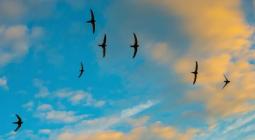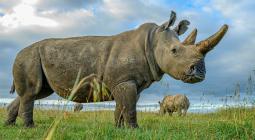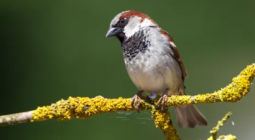‘Watching extinction in real time’: conservationists losing hope for Australia’s swift parrot if logging continues

Experts predict there will be fewer than 100 individuals of the species by 2031 as the rate of decline in population grows faster
They’re really cute. They are very chatty. When they’re around you know they’re around,” says conservation scientist Giselle Owens. “They make this little flying call – it goes ‘pip, pip, pip, pip’.”
So fascinated was Owens by the critically endangered swift parrot, she is writing a PhD on the bird, which is one of just two migratory parrot species in the world, and the farthest flying.
The other is also a critically endangered Australian species – the orange-bellied parrot.
Earlier this year, Owens led a paper with a group of researchers from the Australian National University that modelled new population projections for the swift parrot.
What they found was concerning. Based on years of extra population data, the projections suggested the outlook for the parrot was getting worse.
They projected there would be fewer than 100 individuals in the population by 2031, with a mean population of just 58 birds, unless there was drastic conservation intervention. They forecast a 92.3% decline in the population over an 11-year period beginning in 2020.
“The rate of decline is faster and the timescale [in which it occurs] is shorter,” Owens says.
She says the model is also unfortunately an optimistic assessment because it excludes threats to the bird, except for sugar glider predation. The impact of the key threat to the species – logging of its forest breeding habitat – will be the subject of further modelling.
Samantha Vine, the head of conservation and science at BirdLife Australia, says “we are watching extinction in real time for the swift parrot”.
“I’ve got a little boy starting school next year. This research says that by the time he finishes high school it might be too late for this spectacular bird,” she says.
“Incredibly, it’s still possible to see swifties feeding on eucalypts in Port Macquarie near where we live, back yards in Melbourne and other urban areas during their migration from the mainland to Tasmania. But the likelihood that you could see one for yourself decreases rapidly every year.”
Vine says what makes it worse is that, unlike for some less-studied species, “we know what to do and how to turn this around”.
“Starting with ending the logging and then permanently protecting their remaining breeding habitat in Tasmania.”
This month, the environment minister, Tanya Plibersek, received criticism over a new recovery plan for the species because, among other concerns, it failed to adequately address clearing of its habitat in Tasmania, as well as areas of the mainland such as the south coast of New South Wales.
Dr Dejan Stojanovic, a conservation scientist at the Australian National University, says in his more than a decade as a member of the recovery team he has seen “successive governments try to distract from their ongoing failure to fix the problems caused by logging in Tasmania”.
“To stop swift parrots going extinct in the next 10 years we need to protect what’s left of their Tasmanian breeding habitat today – there’s no more time to waste.”
Owens says one of the things that was clear from her research was that forest integrity and hollow-bearing trees were the most important features of habitat for both the swift parrot and the sugar glider. Predation by sugar gliders intensifies in areas where there is more clearing and the forest is more fragmented.
She says one of the things that makes the swift parrot such an interesting species from a research perspective is that “they need so much space, so much habitat”.
“It makes them a really great umbrella species because the habitat they require and threats they face are representative of what lots of other forest dependent species need,” she says.
This is one of the factors that makes the outlook for the bird so “scary”, she continues.
“What they need is what all of us need.
“We need our forests for overcoming climate change and for all the other species that are on the same slippery slope.”
Photograph: Alamy - ‘No time to waste.’ Conservationists say ending logging and ‘permanently protecting remaining breeding habitat in Tasmania’ could save the critically endangered swift parrot.






